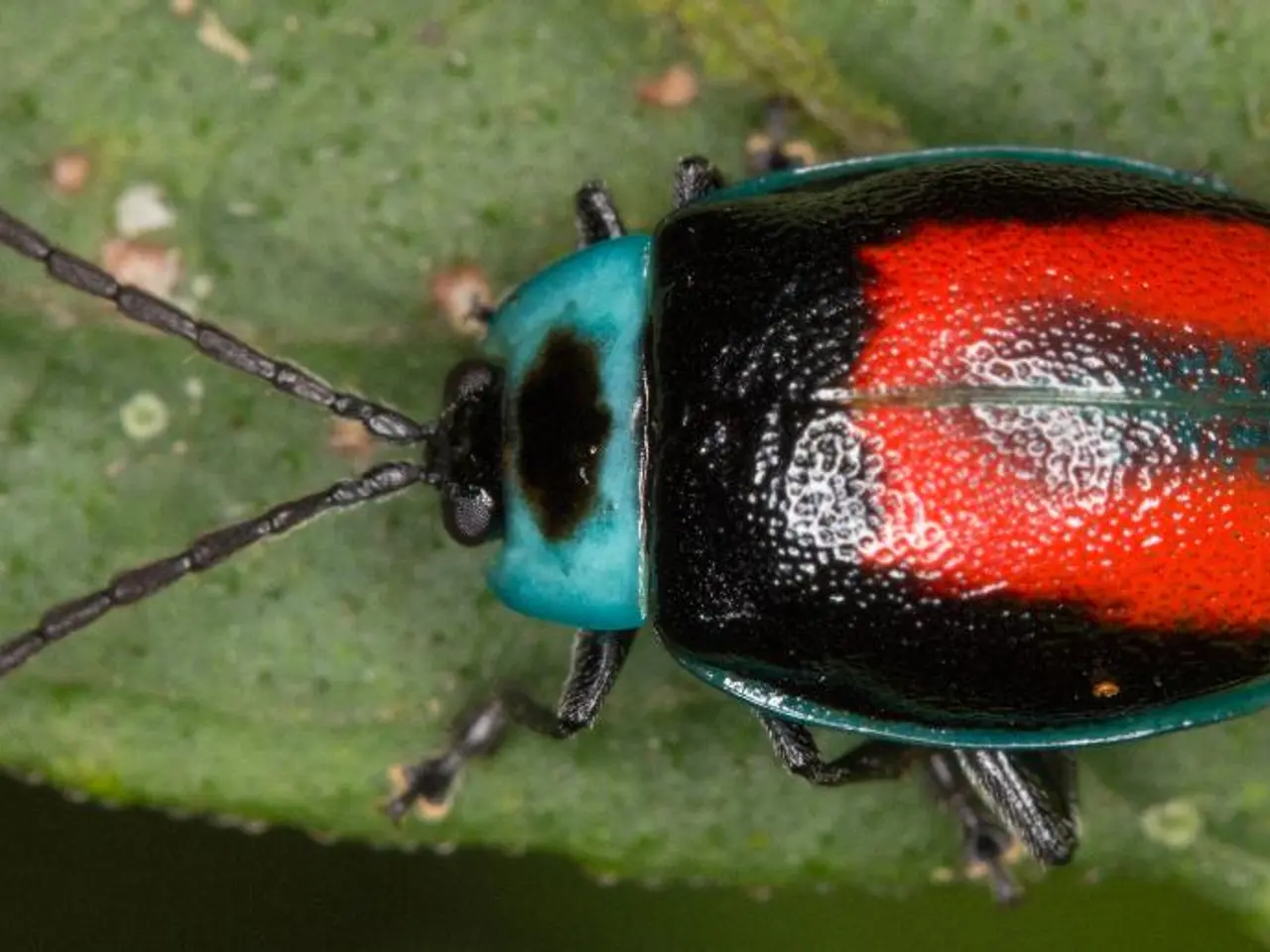Garden Troubleshooter: Recognizing Garden Insects That Could Ravage Your Vegetation
Gardening can be a rewarding hobby, but it can also come with its fair share of challenges, particularly when it comes to pests. Here's a guide to some common garden pests, their characteristics, and methods for effective control.
Cutworms
These pests feed on the stems of young plants, cutting them down. To prevent cutworms, consider using diatomaceous earth, watering the lawn in the morning, and using cardboard collars around plants.
Cucumber Beetles
Cucumber beetles have an appetite for melons, zucchini, squash, and cucumbers. Controlling these pests can be achieved using sticky traps, sprays, or floating row covers.
Red Spider Mites
Red spider mites are tiny pests that can cause yellow spots or streaks on plants. They thrive in dry conditions and can be controlled by increasing the humidity around the plant using a humidifier or by misting the plant with water.
Grasshoppers
Grasshoppers have a large appetite and can be controlled by introducing natural predators like bluebirds, toads, snakes, or using a variety of sprays, insecticides, or traps.
Japanese Beetles
Japanese beetles can infest over 300 species of plants, including roses, fruit trees, and raspberry bushes. They can be controlled using pesticides, beetle traps, attracting natural predators, or spraying nematodes.
Squash Bugs
Squash bugs are destructive pests to gardens and can be kept away by planting vegetation resistant to them, such as butternut, royal acorn, and sweet cheese.
Thrips (Thunder Flies)
Thrips leave white patches on plants and can be removed by using a concoction of dish soap, vinegar, and isopropyl alcohol.
Mealybugs
Mealybugs form large clusters when in groups and hide in the nooks and crannies of leaves, feeding off of plant juices. They can be removed using insecticidal soap, neem oil, and a mixture of isopropyl alcohol and water.
Adult Vine Weevils
Adult vine weevils leave notches in leaves. They can be flicked off plants or controlled using nematodes, traps, or insecticidal sprays.
Flea Beetles
Flea beetles can be prevented from taking over plants by planting strongly scented plants such as catnip, sage, or mint.
Other Common Pests
Aphids, cabbage butterflies, whiteflies, caterpillars, ants, fungus gnats, and scale insects are also common garden pests. Effective control methods emphasize starting with gentle and safe strategies such as physically removing pests, spraying them off with water, using traps or row covers to exclude them, and encouraging natural predators by planting flowers like marigolds, dill, fennel, yarrow, and coreopsis.
For specific pests:
- Aphids: Spray off with water, squash by hand, or attract natural predators (lady beetles) by growing marigolds, echinacea, dill, and yarrow.
- Flea beetles and cabbage butterflies: Handpicking, using row covers to prevent access, or trap crops can help divert them from valuable plants.
- Thrips, spider mites, and whiteflies: Frequent water sprays discourage these pests, which dislike wet foliage. Maintaining good garden hygiene and removing crop debris suppresses overwintering pest populations.
- Caterpillars: Identify and remove by hand or use biological controls like Bacillus thuringiensis (Bt), a natural bacteria-based insecticide.
Cultural practices that reduce pest pressure include proper watering, avoiding overcrowding by correct plant spacing and pruning, not overfertilizing (which promotes tender growth attractive to pests), and maintaining overall plant health. If infestations persist, biological controls are preferred before resorting to chemical pesticides, which should be applied carefully to avoid harm to beneficial insects, pets, and humans.
Early detection is crucial. Watch for signs like distorted or curled leaves, sticky residue (honeydew), tiny holes on leaves, discoloration, sudden ant traffic (which often indicates sap-sucking pests), and wilting despite moist soils.
In summary, integrated pest management for gardeners includes vigilant monitoring, physical removal, encouraging beneficial insects, using row covers and trap crops, maintaining garden hygiene, and resorting to biological or chemical controls only as needed and with care.
References
- University of California Agriculture and Natural Resources. (2020). Integrated Pest Management for Home Gardeners
- Cornell University Extension. (2021). Garden Pests: Identification and Control
- Texas A&M AgriLife Extension. (2020). Common Garden Pests and How to Control Them
- Penn State Extension. (2021). Garden Pests
- Michigan State University Extension. (2021). Garden Pests
Bonnie Ferrero's interests include hiking, cooking, gardening, and home decorating. She embodies a holistic approach to life, dedicated to service, growth, and well-being.
- In the pursuit of gardening, Bonnie Ferrero focuses on growing a variety of flowers, vegetables, and maintaining a clean home-and-garden lifestyle.
- To ensure a flourishing garden, she pays close attention to effective methods for controlling common pests such as cutworms, cucumber beetles, red spider mites, grasshoppers, Japanese beetles, squash bugs, thrips, mealybugs, adult vine weevils, flea beetles, aphids, cabbage butterflies, whiteflies, caterpillars, ants, fungus gnats, and scale insects.
- Bonnie employs various strategies to help prevent infestations, including diatomaceous earth, sticky traps, floating row covers, cardboard collars, the introduction of natural predators, and using concoctions of dish soap, vinegar, isopropyl alcohol, insecticidal soap, neem oil, and a mixture of isopropyl alcohol and water.
- She practices careful cultural practices, such as proper watering, correct plant spacing, pruning, not overfertilizing, and maintaining overall plant health to reduce pest pressure.
- Bonnie follows the principles of integrated pest management, emphasizing vigilant monitoring, physical removal, encouraging beneficial insects, using row covers and trap crops, maintaining garden hygiene, and resorting to biological or chemical controls only as needed and with care.




